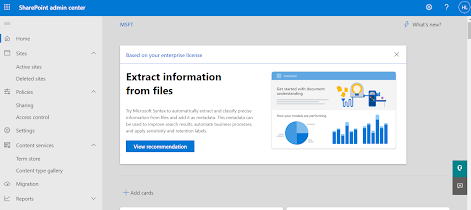Microsoft Azure Notes - Part 1
Microsoft Azure platform is vast and below some notes from Microsoft to learn more about it.
The entire notes is from Microsoft and I segregated those in category wise in three parts.
Note 1
Organizing structure for resources in Azure, which has four
levels: management groups, subscriptions, resource groups, and resources.
·
Resources: Resources are instances of services
that you create, like virtual machines, storage, or SQL databases.
·
Resource groups: Resources are combined into
resource groups, which act as a logical container into which Azure resources
like web apps, databases, and storage accounts are deployed and managed.
·
Subscriptions: A subscription groups together user
accounts and the resources that have been created by those user accounts. For
each subscription, there are limits or quotas on the amount of resources that
you can create and use. Organizations can use subscriptions to manage costs and
the resources that are created by users, teams, or projects.
·
Management groups: These groups help you manage
access, policy, and compliance for multiple subscriptions. All subscriptions in
a management group automatically inherit the conditions applied to the
management group.
Resources are created in regions, which are different geographical locations around the globe that contain Azure datacenters. When you use a service or create a resource such as a SQL database or virtual machine (VM), you're using physical equipment in one or more of these locations. These specific datacenters aren't exposed to users directly. Instead, Azure organizes them into regions.
A region is
a geographical area on the planet that contains at least one but potentially
multiple datacenters that are nearby and networked together with a low-latency
network.
Important
Some services or VM features are
only available in certain regions, such as specific VM sizes or storage types.
There are also some global Azure services that don't require you to select a
particular region, such as Azure Active Directory, Azure Traffic Manager, and
Azure DNS.
Global regions provide better scalability and redundancy.
They also preserve data residency for your services.
Special Azure regions
Azure has specialized regions that we can use when build out our
applications for compliance or legal purposes. A few examples include:
·
US DoD Central, US Gov Virginia, US Gov Iowa and more: These regions
are physical and logical network-isolated instances of Azure for U.S.
government agencies and partners. These datacenters are operated by screened
U.S. personnel and include additional compliance certifications.
·
China East, China North, and more: These regions
are available through a unique partnership between Microsoft and 21Vianet,
whereby Microsoft doesn't directly maintain the datacenters.
Regions are what you use to identify the location for your
resources. There are two other terms you should also be aware of: geographies and availability zones.
Availability zone?
Availability zones are physically separate datacenters within an
Azure region. Each availability zone is made up of one or more datacenters
equipped with independent power, cooling, and networking. An availability zone
is set up to be an isolation
boundary. If one zone goes down, the other continues working.
Availability zones are connected through high-speed, private fiber-optic
networks.
Not every region has support for availability zones. For an
updated list, see Regions that support availability zones in Azure.
Keep in mind that there could increase you cost as you demand
for redundancy.
You can use availability zones to run
mission-critical applications and build high-availability into your application
architecture by co-locating your compute, storage, networking, and data
resources within a zone and replicating in other zones. Keep in mind that there
could be a cost to duplicating your services and transferring data between
zones.
Availability zones are primarily for VMs, managed
disks, load balancers, and SQL databases. The following categories of Azure
services support availability zones:
·
Zonal services: You pin the resource to a specific
zone (for example, VMs, managed disks, IP addresses).
·
Zone-redundant services: The platform
replicates automatically across zones (for example, zone-redundant storage, SQL
Database).
·
Non-regional services: Services are
always available from Azure geographies and are resilient to zone-wide outages
as well as region-wide outages.




Comments
Post a Comment